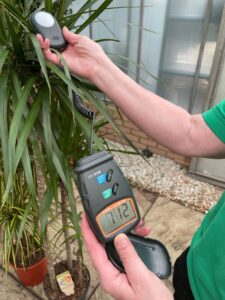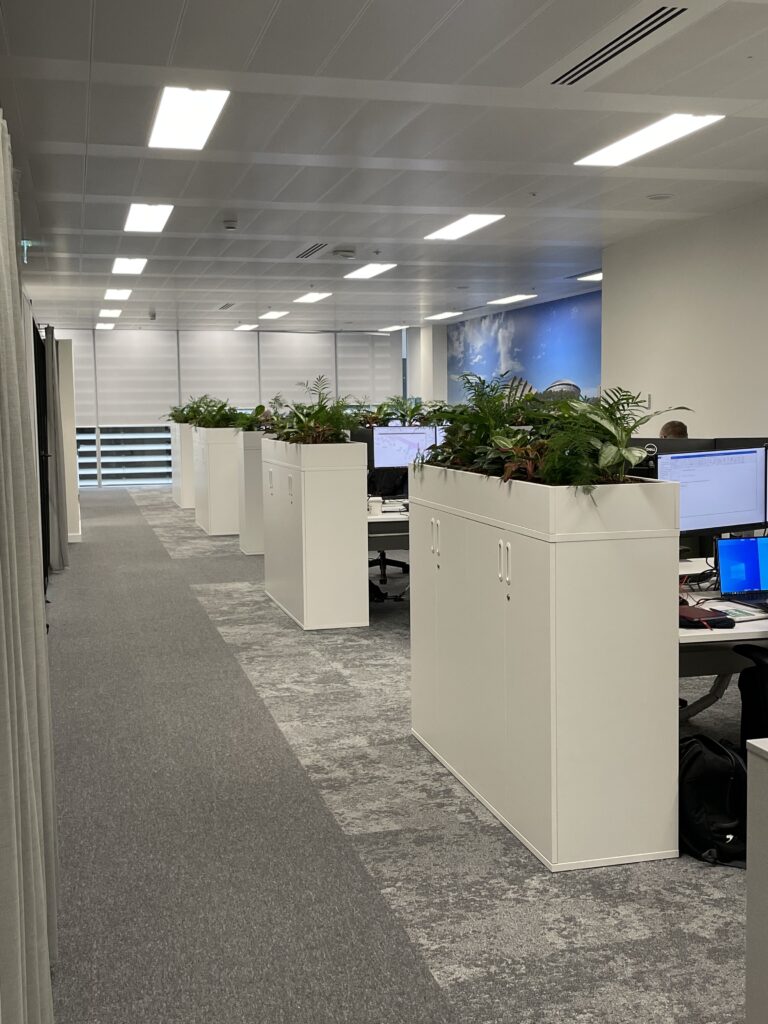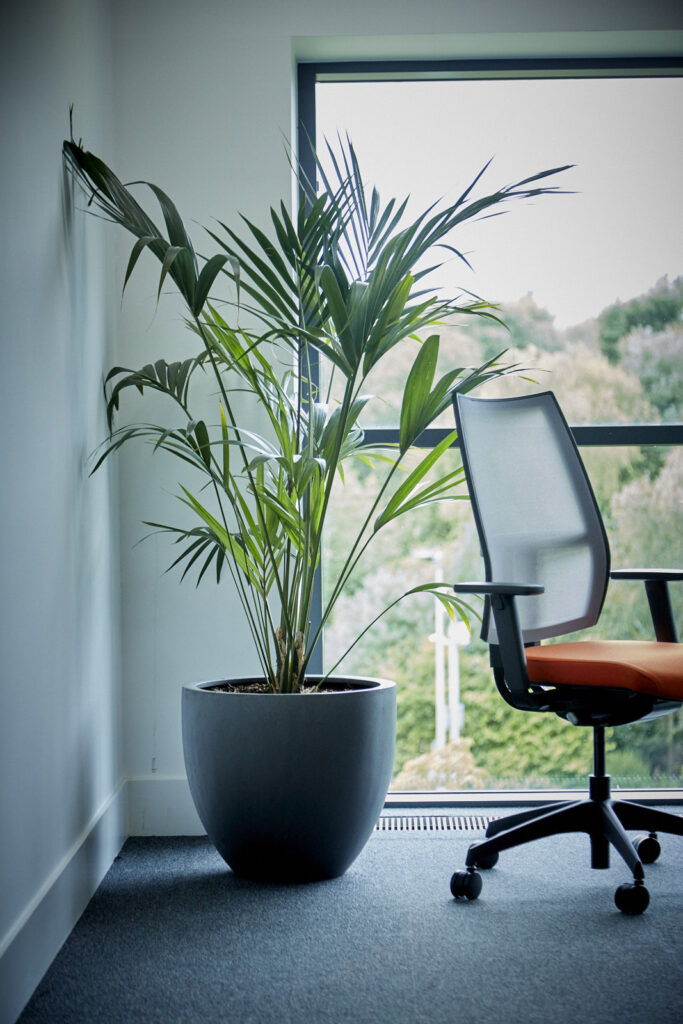Many companies recognise the advantages of adding live planting to the work environment. Incorporating greenery into your interior design can improve productivity, reduce absence levels, increase humidity and even purify the air. But as living organisms, plants need the correct conditions to survive and grow. Light, water and warmth are all essential to ensuring plant health. Getting this right is key to protecting your investment. In this blog, we’ll throw the spotlight on the importance of checking light levels and lend some practical guidance on taking measurements.
Why plants need light
Plants require light to make energy through a process called photosynthesis. The energy generated allows the plant to produce food to grow, flower or generate fruit. Deprived of rays, the plant will weaken and become pale and spindly, as it uses any energy in its reserves to search for light. Too much light, on the other hand, can scorch leaves and lead to wilting.
Different varieties of plants require varying levels of light. So before choosing your plants, it’s crucial to ascertain the light conditions of each location. You can then confidently pick plants to suit the conditions or add artificial light if required.
Equipment
The most accurate way to measure light levels is to use light meter. However, if you don’t want to go to the expense of investing in a dedicated device there are also many light meter apps available which will do the trick just as well.

Taking a reading
To take a reading, hold the light meter or device close to the plant, facing the light source. If the plant is a small, desk top size specimen, then one reading will probably suffice. In the case of a large plant, tree or green wall however, it is usually necessary to take several readings from different positions as light intensity depletes rapidly from its source. So, if light hits a green wall at the top for example, it may record a higher reading than at a lower level, therefore the plants at the foot may struggle to survive if light levels are insufficient.
When to take a reading
Natural light measurements are best taken in the middle of the day when the sun is at its strongest. In many commercial environments however, plants often receive most of their rays from artificial lighting which will remain fairly constant throughout the day. In these circumstances, the timing of the reading will have minimal impact on the measurements.
Artificial light
Where plants rely on artificial light, it is important to consider the duration of exposure to light. Plants also need a ‘rest period’ from light within a 24-hour period – normally at least 8 hours a day. During this time the plant takes a break from growing and moves nutrients around its extremities in a process called ‘translocation’. If your office is illuminated 24/7, plants will be unable to ‘rest’ and struggle to thrive.


Understanding the reading
Light is measured in lux (metric measure) or foot candles (imperial measure), where 1 footcandle = 10.764 lux. The measurement of lux or footcandles, is the amount of light that falls on the surface.
Table 1 gives some guidance on interpreting readings and provides examples of plants that would fit the bill depending for different light levels.
| Lux | Light Level | Example Plants |
| 300-700 | Low | Zamioculcas, Aglaonema |
| 700 -1500 | Medium | Kentia Palm, Spathiphyllum |
| 1500+ | High | Yucca, Ficus |
It’s important to point out that these are recommended levels. Plants will survive at lower values, but they won’t thrive and may suffer in the long term.
Subjective measurements
Don’t want to get so technical? If you rely mostly on natural light, knowing what direction your windows are facing will give you a good indication of the strength of your light source. Grab a compass, or another app, and check your orientation. Depending on your bearings follow the general guidance below.
South-facing: Mostly indirect to full sunlight, so ideal for light loving plants.
West and east facing: Medium to bright indirect light. The light will change in these spaces depending on the time of day, so plants that can tolerate different light levels are ideal.
North-facing: Best for plants that don’t mind low levels of light.
Using this more rudimental method of gauging light levels, it’s also important to consider outdoor trees or nearby buildings blocking sunlight, the size of the windows affecting how far into the room light will travel and the position of the plant in the space as corners receive less hours of sunlight than the middle of the room.
Check, check
While checking light levels can be relatively quick and easy, the information you gain can be invaluable in selecting the right plant for the right spot and getting the most out of your live assets.
But remember, we are here to help. Measuring light levels and advising on plant choice is all part of our free of charge survey. Please give us a call if you would like to discuss the position of any new plants you are considering or to check the condition of your existing plants to see if the light levels are affecting their health.












